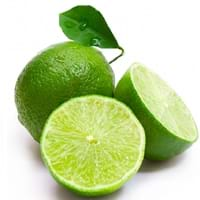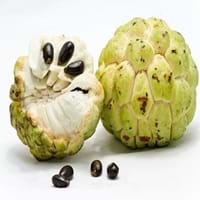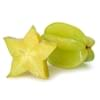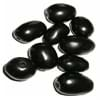jeruk nipis dan cherimoya
Manfaat
Keuntungan sehat
pengobatan arthritis, pengobatan kolera, pengobatan asam urat, perawatan jantung, pengobatan tumpukan, pengobatan penyakit kudis
pencegahan kanker, perawatan jantung, Peraturan denyut jantung
Manfaat Umum
menyembuhkan demam, bantuan pencernaan, Perawatan mata, Menjaga tingkat kolesterol yang sehat, Pengobatan flu biasa
sifat anti oksidan, sifat anti-inflamasi, Meningkatkan sistem kekebalan tubuh, Kontrol tekanan darah, bantuan pencernaan, menguatkan tulang
Manfaat kulit
manfaat anti-penuaan, peremajaan kulit, Pengobatan jerawat, Pengobatan bintik-bintik gelap
mengurangi keriput, peremajaan kulit
Manfaat rambut
Mempromosikan lagi dan rambut sehat, Pengobatan ketombe
Mempromosikan lagi dan rambut sehat, Pengobatan ketombe, Pengobatan Kutu
Alergi
Gejala alergi
kesulitan bernapas, Batuk, iritasi mata, hives, Peradangan, Hidung tersumbat, ingusan, Ruam kulit, mengi
anafilaksis, gatal, Ruam kulit, Pembengkakan wajah
Efek samping
Kemungkinan sengatan matahari
Reaksi alergi, Mungkin tidak aman selama kehamilan
recommeded untuk
Wanita hamil
iya nih
iya nih
Wanita menyusui
Tidak
iya nih
Waktu terbaik untuk makan
Seiring dengan makanan, Terbaik untuk minum air hangat dengan jeruk nipis pada perut kosong, Jangan mengkonsumsi pada malam hari dan sebelum tidur
Sebagai camilan di sore hari, Jangan mengkonsumsi pada malam hari dan sebelum tidur, waktu pagi hari (sebelum makan siang)
Nutrisi
melayani Ukuran
100 gram
100 gram
Karbohidrat
10,50 g
99+
17,71 g
18
Serat
2,80 g
22
3,00 g
20
Gula
1,70 g
99+
12,87 g
12
protein
0,70 g
99+
1,57 g
14
Protein untuk carb Ratio
0,07
20
0,09
16
vitamin
Vitamin A (Retinol)
2,00 mcg
33
Tidak tersedia
Vitamin B1 (Thiamin)
0,03 mg
31
0,10 mg
6
Vitamin B2 (Riboflavin)
0,02 mg
38
0,13 mg
5
Vitamin B3 (Niacin)
0,20 mg
99+
0,64 mg
21
Vitamin B5 (Pantothenic Acid)
0,22 mg
27
0,35 mg
10
Vitamin B6 (piridoksina)
0,05 mg
39
0,26 mg
5
Vitamin B9 (asam folat)
8,00 mcg
27
23,00 mcg
11
Vitamin C (asam askorbat)
29,10 mg
30
12,60 mg
99+
Vitamin E (Tocopherole)
0,22 mg
28
0,27 mg
25
Vitamin K (Phyllochinone)
0,60 mcg
31
Tidak tersedia
lycopene
0,00 mcg
9
0,00 mcg
9
lutein + zeaxanthin
0,00 mcg
36
6,00 mcg
34
kolin
5,10 mg
24
Tidak tersedia
Lemak
0,20 g
33
0,68 g
11
bahan galian
Kalium
102,00 mg
99+
287,00 mg
20
Besi
0,60 mg
21
0,27 mg
38
Sodium
2,00 mg
18
7,00 mg
12
Kalsium
33,00 mg
13
10,00 mg
34
Magnesium
6,00 mg
29
17,00 mg
17
Seng
0,11 mg
22
0,16 mg
17
Fosfor
18,00 mg
27
26,00 mg
20
manggan
0,01 mg
99+
0,09 mg
33
Tembaga
0,07 mg
35
0,07 mg
33
selenium
0,40 mcg
13
Tidak tersedia
Asam lemak
omega 3s
19,00 mg
25
318,00 mg
1
6s Omega
36,00 mg
40
56,00 mg
29
sterol
Kandungan air
88,26 g
17
79,39 g
99+
Abu
0,30 g
38
0,65 g
18
kalori
melayani Ukuran
100 gram
100 gram
Kalori di Buah Segar dengan Peel
Tidak tersedia
Tidak tersedia
Kalori di Buah Segar tanpa Peel
30,00 kkal
23
75,00 kkal
9
Kalori di Frozen Form
Tidak tersedia
Tidak tersedia
Kalori dalam Formulir Kering
Tidak tersedia
Tidak tersedia
Kalori dalam Formulir Kaleng
20,68 kkal
26
Tidak tersedia
Kalori dalam Makanan
Kalori dalam Juice
30,00 kkal
38
Tidak tersedia
Kalori di Jam
250,00 kkal
19
Tidak tersedia
Kalori di Pie
420,00 kkal
2
Tidak tersedia
karakteristik
Mengetik
Jeruk, buah pohon
Tropis
Musim
Semua musim
Musim gugur, Musim semi, Musim dingin
varietas
jeruk nipis, Persia kapur, Jeruk purut, Desert kapur, Palestina Sweet Lime, Meksiko Sweet Lime, Mary Ellen Sweet Lime
Andrews, Amarilla, Asca, Baste, Bays, Bayott, Behl, Canaria, Capucha, Deliciosa, Ekuador, El Bumpo, Guayacuyán, Jete, Juniana, Knight, Nata, Popocay, Sander, Smoothey, Tumba, Umbonada, Whaley dan Putih Juliana
tanpa biji Ragam
iya nih
Tidak
Warna
hijau
hijau, Kuning
Di dalam Warna
Hijau muda
putih
Bentuk
Bulat
Berbentuk kerucut
Tekstur
Lezat
Gemuk
Rasa
asam, Asam
Manis
Asal
India
Ekuador
tumbuh pada
pohon
pohon
Penanaman
Jenis tanah
liat lempung, lempung berpasir
lempung berpasir
pH tanah
6-7.5
6.5-7.6
Kondisi iklim
Cerah, Hangat untuk iklim panas
Hangat
fakta
Fakta tentang
- Kapur yang disebut sebagai pusat kekuatan rasa.
- jeruk nipis segar sangat asam yang dapat melarutkan beton.
- Limes lebih harum dan asam dari lemon.
- limes Persia hampir tanpa biji dan duri kurang.
- Cherimoya juga disebut sebagai custard apel atau chirimoya.
- Kata cherimoya berasal dari kata Quechua, 'chirimuya', yang berarti 'benih dingin'.
- cherimoya yang disebut sebagai 'pohon es krim'.
Dalam Minuman Beralkohol
Anggur
iya nih
iya nih
Bir
iya nih
iya nih
Spirits
iya nih
iya nih
cocktails
iya nih
iya nih
Produksi
Top Producer
Cina
Spanyol
Negara-negara lain
Argentina, Brazil, India, Mexico
Argentina, Chili, Kolumbia, Mesir, Italia, Mexico, Peru, Afrika Selatan, Amerika Serikat
Top Importir
Amerika Serikat
Amerika Serikat
Top Eksportir
Mexico
Spanyol
Nama ilmiah
Nama botani
Citrus aurantifolia
Annona cherimola
Sinonim
tidak tersedia
Tidak tersedia
Klasifikasi
Domain
Eukarya
Eukarya
Kerajaan
Plantae
Plantae
subkingdom
Tracheobionta
Tracheobionta
Divisi
Magnoliophyta
Magnoliophyta
Kelas
Magnoliopsida
Magnoliopsida
subclass
Rosidae
Magnollidae
Memesan
Sapindales
magnoliales
Keluarga
Rutaceae
Annonaceae
Marga
Jeruk
Annona
Jenis
C. aurantifolia
A. cherimola
generik Grup
Buah jeruk
Tidak tersedia
|
||
|
||
|












